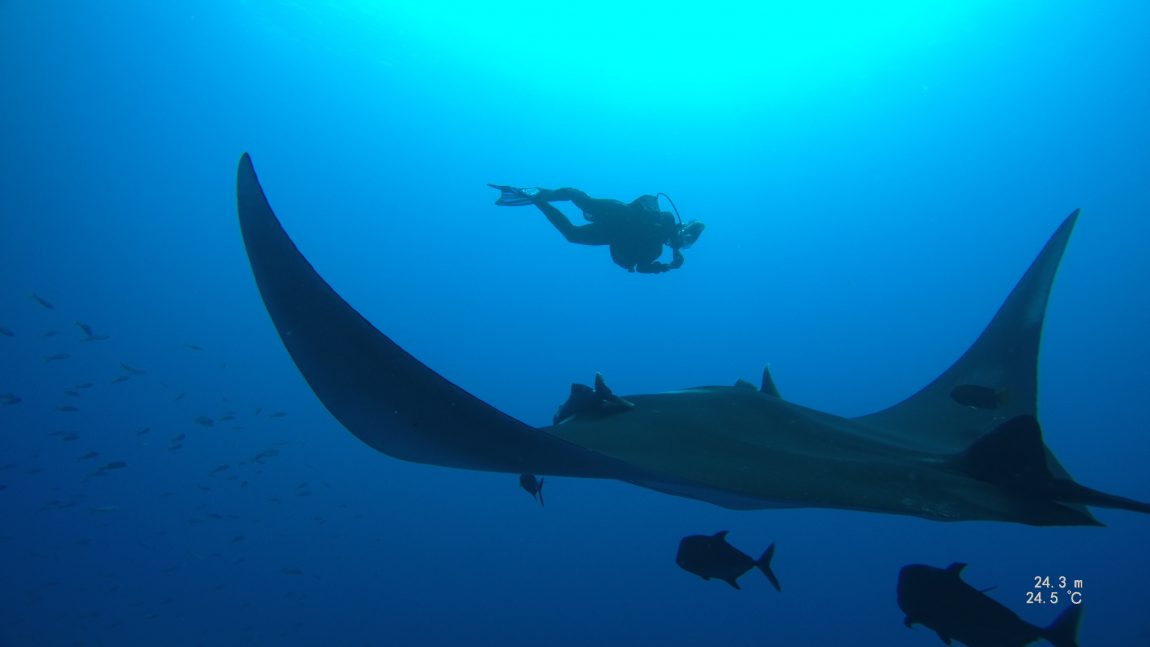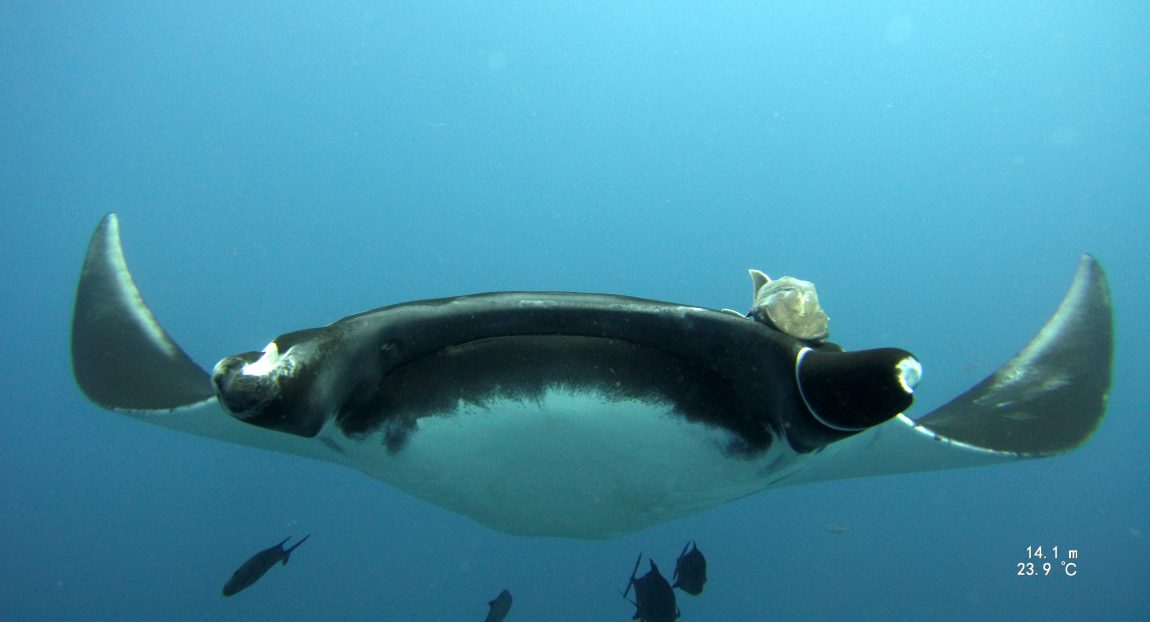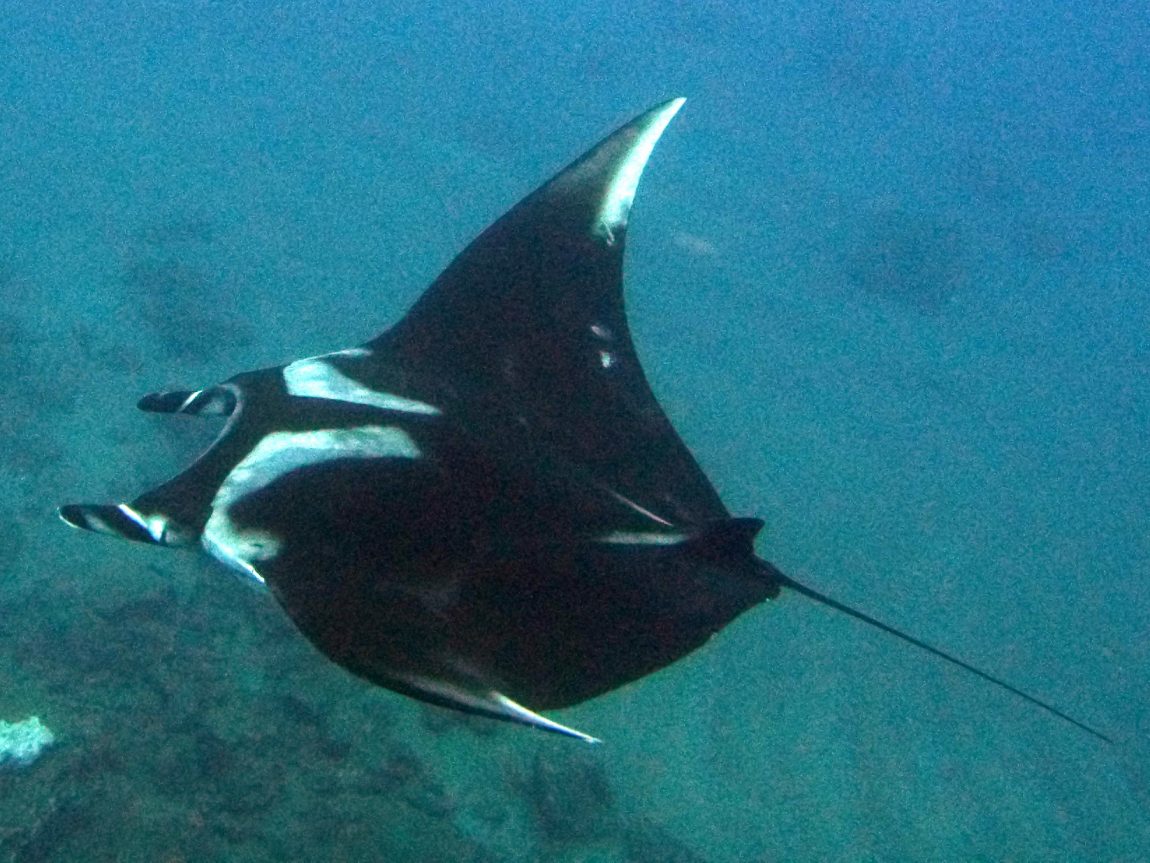
Sailing Citizen Scientists Support Manta Ray Research
Alene Rice and Bruce Balan have sailed more than 60,000 miles while living and cruising aboard their California-based Cross 46 trimaran Migration. When we last heard from the couple they were sharing information about the Floating Marine Plastic Debris Accumulation Reporting Tool — a survey that aimed to “understand to what extent satellites can detect floating marine debris” by collating observations at sea and matching them to satellite images. That program was due to end this past summer, but Alene and Bruce are continuing to help support research into the oceans they love, this time through their observations of manta rays.

The couple has been working with the Pacific Manta Research Group to create a citizen science project for sailors in Mexico. The idea is for sailors to observe the magnificent sea creatures and report their findings, such as the location, date and time of the sightings along with the manta’s estimated wingspan, its color, specific markings, and a photo. Taking it one step further, Alene and Bruce created the brochure attached below, which contains all the relevant information and links.
Here is what Bruce has to say about their involvement with the project:
“After spending 17 weeks diving with oceanic manta rays at the Islas Revillagigedo over the past three years, we’ve completely fallen in love with these beautiful and curious fish. An 18-foot manta gracefully gliding inches away, staring directly at us with one of its big black eyes, is truly one of the most powerful and wondrous experiences we’ve ever had.”

“Because mantas can be identified by the spots on their bellies, we began sending our photos to researchers who have been tracking the mantas of Mexico for decades. It occurred to us that hundreds of boats crisscrossing Mexican waters could provide a lot of citizen science research-eyes out in the real world.
“Working with the Pacific Manta Research Group, we created a brochure that we hope will inform and inspire cruisers to keep an eye out for oceanic mantas and report any sightings. The data will be used by researchers to develop maps of the mantas’ migratory routes, and perhaps help create protocols to avoid ship strikes and protect their habitat.”

Bruce tells us the brochure will be included in the Baja Ha-Ha skippers’ packets. But if you’re not joining the Ha-Ha fleet, you can download the brochure here.
We agree with Alene and Bruce that it’s all for a great cause — helping protect oceanic manta rays — so we hope you’ll join the program and/or share the information with others.
